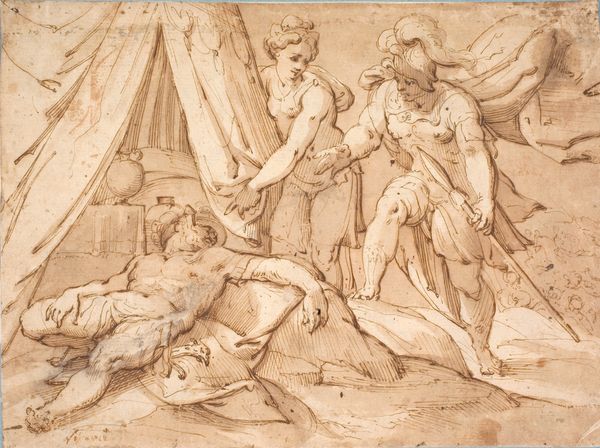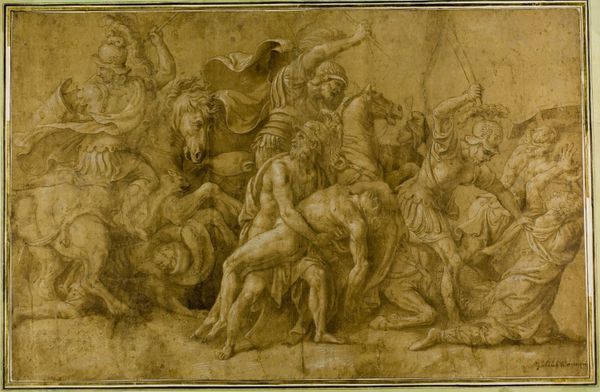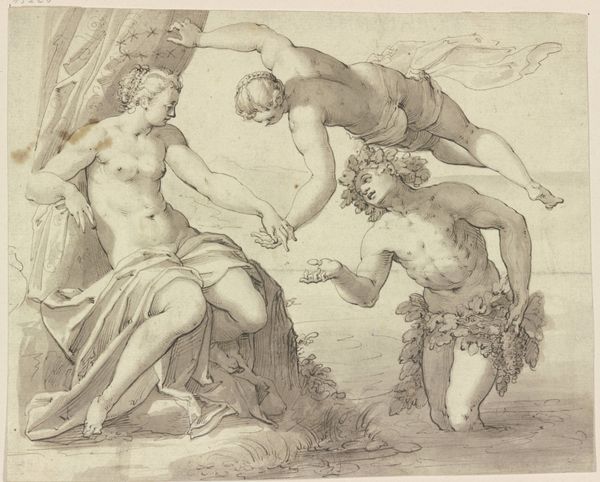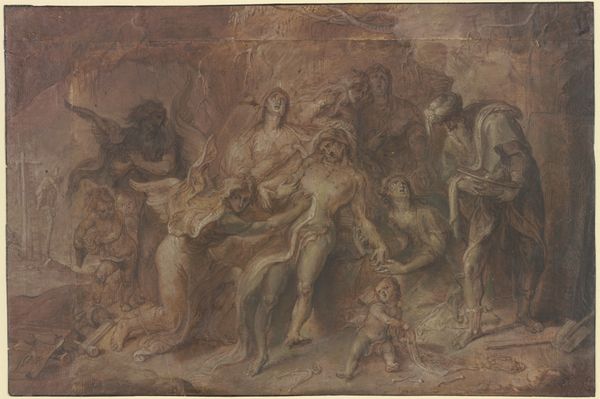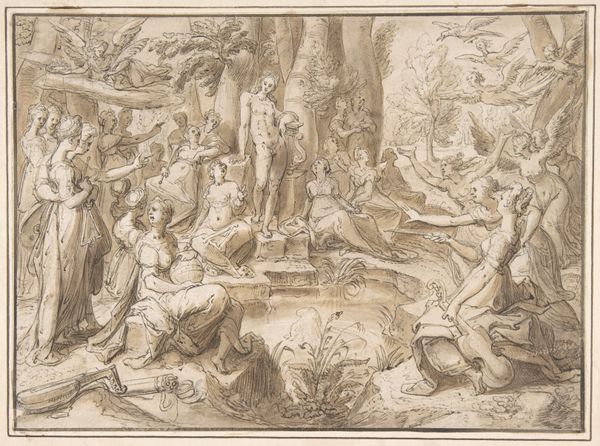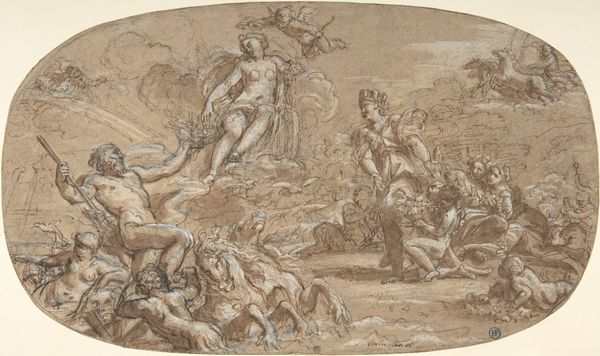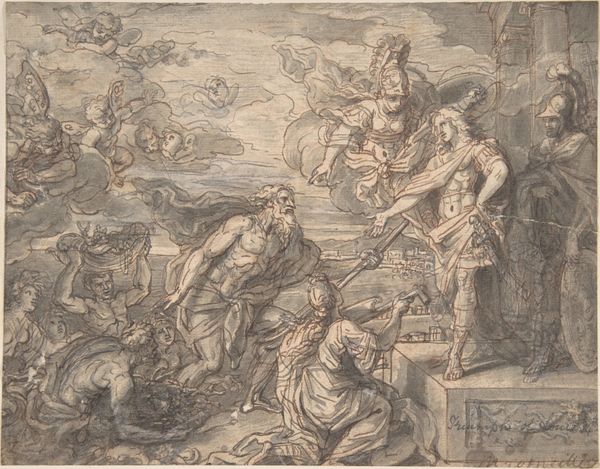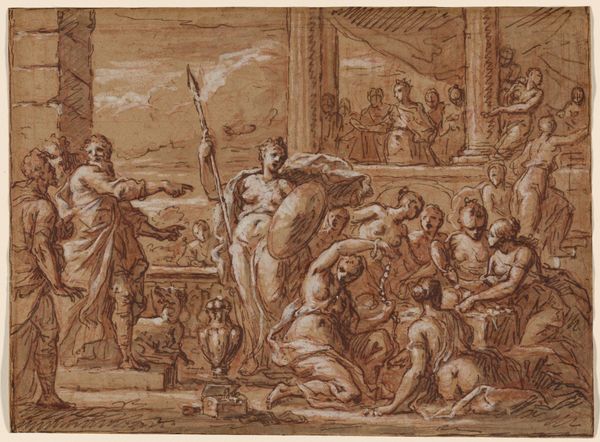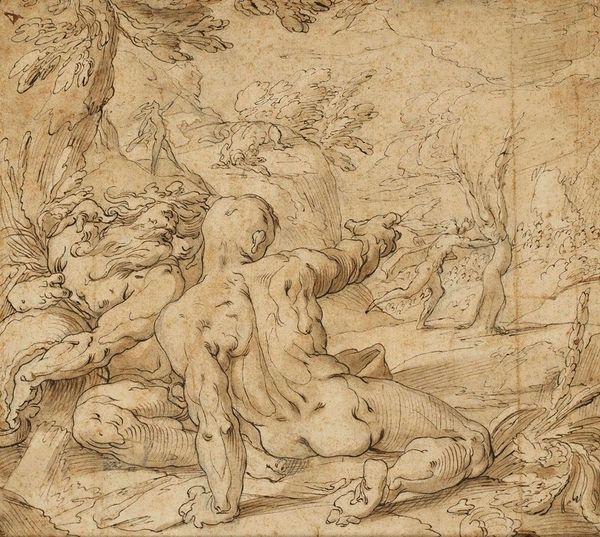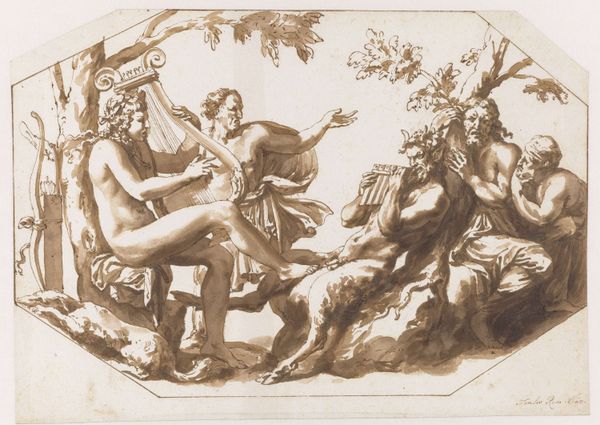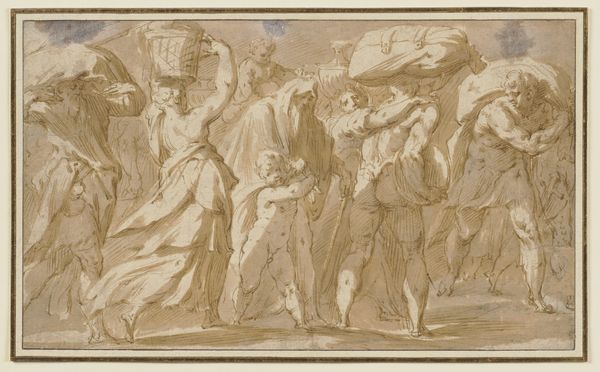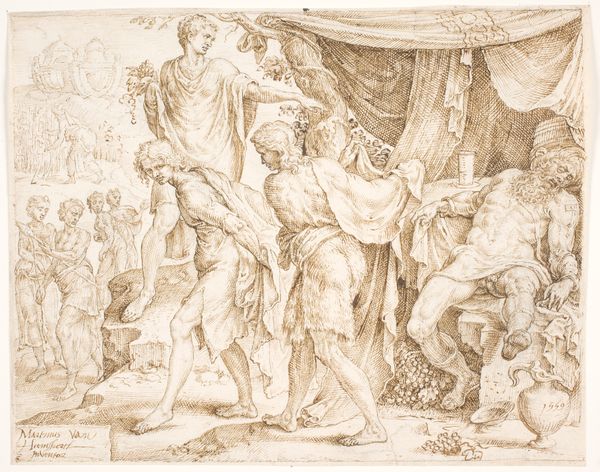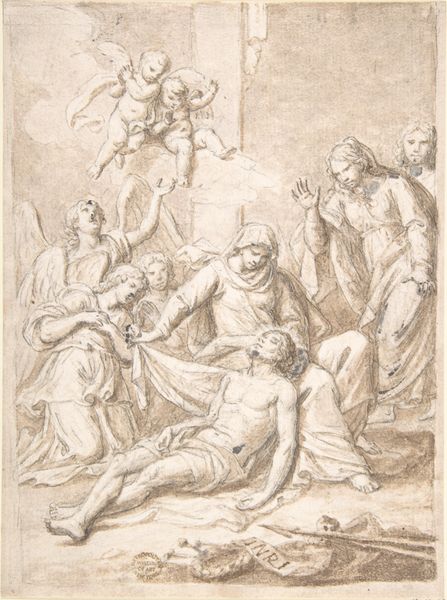
drawing, charcoal
#
drawing
#
neoclacissism
#
charcoal drawing
#
figuration
#
charcoal
#
history-painting
#
academic-art
#
charcoal
Dimensions: 16 3/4 x 22 7/8 in. (42.55 x 58.17 cm) (sheet)
Copyright: Public Domain
This drawing, attributed to Louis-Jean-François Lagrenée, was made around 1760 using pen and brown ink, with brown wash over graphite on paper. While these are traditional art materials, they are used here in a way that suggests a rapid, almost industrial mode of production. Note the ways in which the ink and wash create a sense of depth and volume, giving the figures a sculptural presence. The artist has used the inherent qualities of the materials to create a dynamic composition, full of movement and drama. The monochromatic palette further emphasizes the artist's skill in manipulating tone and texture to create a visually compelling image. It’s worth reflecting on the amount of work involved in the production process. Drawings like this were often studies for larger paintings, meaning that a great deal of labor went into preparatory sketches. It can also be understood within a wider social context, where the production of art was often tied to systems of patronage and power. Understanding the materials, making, and context is key to understanding the full meaning of artworks like Apollo, challenging the traditional distinctions between fine art and craft.
Comments
No comments
Be the first to comment and join the conversation on the ultimate creative platform.
